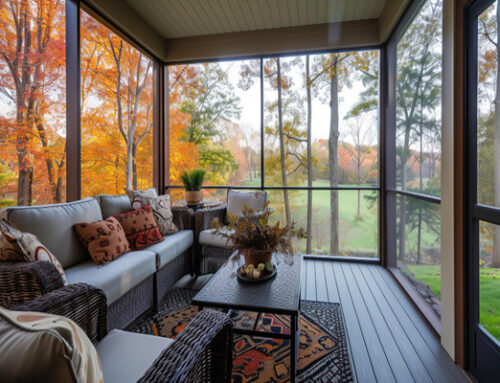Sunroom additions are one of the most popular ways to expand living space, increase home value, and enjoy natural light year-round. If you’re considering adding a sunroom to your Northern Virginia home, you may be wondering about the differences between 3 and 4 season rooms—and which one is right for your lifestyle and budget.
At America’s Best Contractor, we’ve helped homeowners throughout the region design and build custom sunroom additions that enhance comfort and functionality. In this article, we’ll break down the key features, benefits, and differences between 3 season and 4 season rooms so you can make an informed decision for your home.
What Is a 3 Season Room?
A 3 season room is a type of sunroom designed for use during spring, summer, and fall. It typically includes large windows or screens to allow plenty of natural light and ventilation. However, it’s not insulated for winter use, meaning it may become too cold during the colder months in Northern Virginia.
Key Features of a 3 Season Room:
- Built with lightweight materials (aluminum framing, single-pane glass)
- No HVAC integration (may use portable fans or heaters)
- Designed to keep out rain, bugs, and debris
- Cost-effective compared to 4 season rooms
Pros:
- Lower cost of installation
- Great for spring to fall use
- Adds visual appeal and resale value
Cons:
- Not usable in winter without supplemental heating
- Less energy-efficient than a 4 season room
What Is a 4 Season Room?
A 4 season room, also known as an all-season sunroom, is fully insulated and integrated with your home’s HVAC system, allowing for comfortable use year-round—even in the coldest Northern Virginia winters or humid summers.
Key Features of a 4 Season Room:
- Insulated walls, floors, and ceilings
- Energy-efficient windows (typically double- or triple-pane glass)
- Integrated heating and cooling
- Seamless transition from the main home
Pros:
- Year-round functionality
- Increased home value and living space
- Excellent natural lighting without sacrificing comfort
Cons:
- Higher upfront cost
- Requires additional permitting and structural considerations
Major Differences Between 3 and 4 Season Rooms
| Feature | 3 Season Room | 4 Season Room |
| Usage | 3 seasons (spring, summer, fall) | All 4 seasons |
| Insulation | Minimal | Fully insulated |
| HVAC Integration | Typically not included | Fully connected to home’s HVAC |
| Window Type | Single-pane or screen | Double/triple-pane, low-E glass |
| Cost | Lower | Higher (but higher ROI) |
| Building Permits | Often simpler | May require more complex permits |
Which One Should You Choose?
The best choice depends on how you plan to use the space and what your budget allows.
- Choose a 3 season room if you want a budget-friendly way to enjoy the outdoors during the warmer months.
- Choose a 4 season room if you want a fully functional indoor-outdoor living space for relaxing, entertaining, or working from home all year long.
At America’s Best Contractor, we’ll help you weigh the pros and cons and customize a design that fits your needs and style preferences.
Why Northern Virginia Homeowners Choose America’s Best Contractor
Since 2009, we’ve been a trusted name in home additions across Northern Virginia, including Fairfax, Centreville, Arlington, and surrounding communities. Our expert team offers:
- Custom sunroom design and construction
- High-quality materials and craftsmanship
- Transparent pricing and detailed estimates
- Full-service permitting and code compliance
We make the process of adding a 3 or 4 season room easy and stress-free—from concept to completion.
Get a Free Estimate on a 3 or 4 Season Room
Ready to expand your home with a custom sunroom addition? Contact America’s Best Contractor today to schedule a free consultation. Whether you’re interested in a 3 season room for casual summer evenings or a 4 season room for year-round comfort, we’ll design and build a space you’ll love.
Visit www.americasbestcontractor.com to learn more about our sunroom and home addition services in Northern Virginia.



